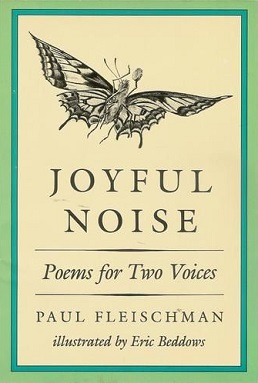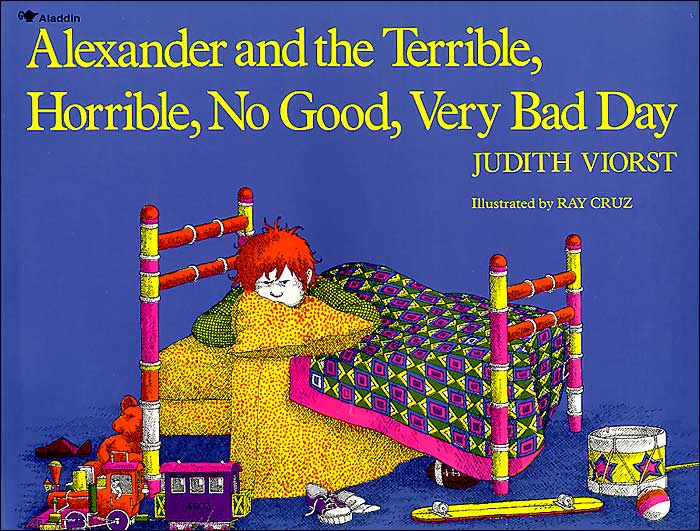
I WILL NEVER NOT EVER EAT A TOMATO by Lauren Child is the story of Lola a small and very fussy eater and her brother Charlie who was assigned by their parents to feed Lola. With colorful collages of photographs and childlike drawings and fun filled text placed in various and sundry areas of the big pages its a real page turner! After Lola, sitting at the table waiting for her dinner gave her dissertation on what she won't eat, Charlie proves to be quite the problem solver turning what might have been a major confrontation into a wonderful game. He gave all the foods new and intriguing names. Now who could resist "orange twiglets fom Jupiter", "green drops from Greenland, "cloud fluff from the pointiest peak of Mount Fuji" or the favorite food of mermaids, "ocean nibbles from the supermarket under the sea"? Charlie created the space for Lola to assert herself and, then Lola renamed the tomato just so she could stick to her guns about never not ever eating a tomato. All ends well. All children would rather have fun, and can easily be distracted by making the potential confrontation into a game, instead. This book eloquently makes that point, and ensures many more peaceful hours in many households.
Bonnie R
197 of 1001





 The children in room 207 are misbehaving: spitballs and paper planes are everywhere and they are rude even during story hours! Poor miss Nelson cannot cope with them and disappears one day. Now the children from the room 207 have a new substitute teacher: Ms. Viola Swamp! She is strict, she is mean, and she will give so much homework to children from the room 207! Now children from room 207 miss Nelson very much…… This humorous book is a perfect read for preschoolers and up. With the plot worthy of Hitchcock, and with funny quirky illustration filled with clues and sharks, this marvelous story will delight, puzzle and amuse every child who loves to read silly stories-thrillers. The storyline is very creative, and the illustrations made with crayon complement the text perfectly. I loved the description of dailies in school with all the flying airplanes, chewing gum and noise sounded so familiar! The author also uses “speaking” last names such as detective Mc Smogg( who smokes pipes on the pictures) and Viola Swamp( mean and nasty one). I also enjoyed the concept of probability gently introduce when children try to figure out what happened to their beloved teacher (“Maybe Miss Nelson went to Mars” – “but that did not seem likely either”)
The children in room 207 are misbehaving: spitballs and paper planes are everywhere and they are rude even during story hours! Poor miss Nelson cannot cope with them and disappears one day. Now the children from the room 207 have a new substitute teacher: Ms. Viola Swamp! She is strict, she is mean, and she will give so much homework to children from the room 207! Now children from room 207 miss Nelson very much…… This humorous book is a perfect read for preschoolers and up. With the plot worthy of Hitchcock, and with funny quirky illustration filled with clues and sharks, this marvelous story will delight, puzzle and amuse every child who loves to read silly stories-thrillers. The storyline is very creative, and the illustrations made with crayon complement the text perfectly. I loved the description of dailies in school with all the flying airplanes, chewing gum and noise sounded so familiar! The author also uses “speaking” last names such as detective Mc Smogg( who smokes pipes on the pictures) and Viola Swamp( mean and nasty one). I also enjoyed the concept of probability gently introduce when children try to figure out what happened to their beloved teacher (“Maybe Miss Nelson went to Mars” – “but that did not seem likely either”)






